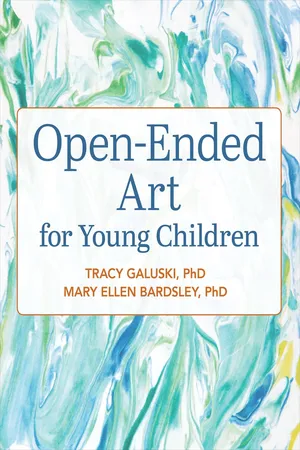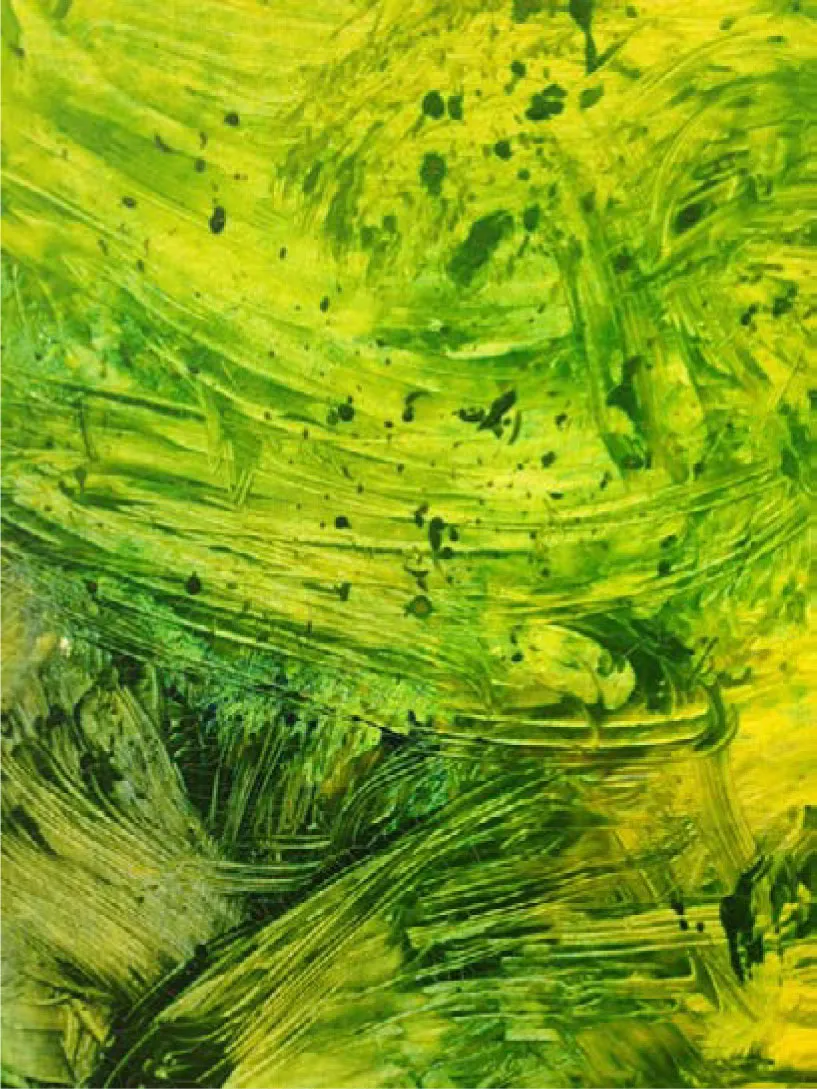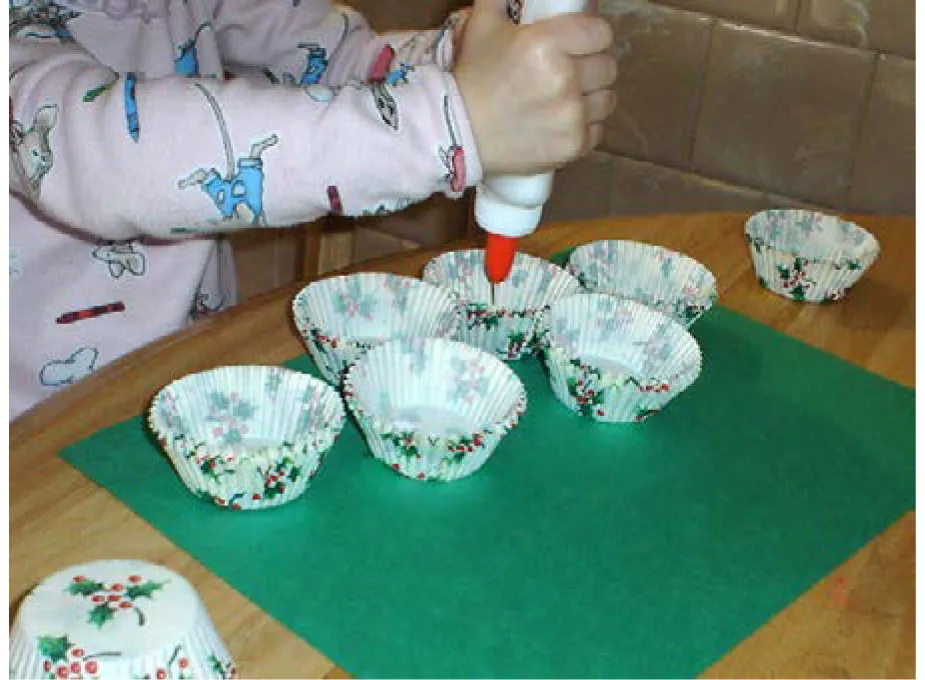
- English
- ePUB (mobile friendly)
- Available on iOS & Android
eBook - ePub
Open-Ended Art for Young Children
About this book
Open-ended art is defined as art activity where children are free to use their imagination as they explore a variety of materials without a planned outcome. When teachers embrace open-ended art, they emphasize the process of creating, and observe the developmental growth being experienced by the children. Open-ended art provides children an important opportunity to think about, feel, and express ideas. It helps teachers slow down the pace of the activity in order to observe and feel the environment all around.
There are many books available to educators that include art ideas and projects, but Open-Ended Art for Young Children goes beyond the basics to highlight why the field of early childhood education advocates for open-ended art, and explain how to adapt to new ways of thinking about art. Authors Dr. Tracy Galuski and Dr. Mary Ellen Bardsley present, chapter by chapter, the challenges teachers encounter when faced with best practices and expectations related art process and product. Each chapter begins with a classroom vignette that describes the challenge, followed by a plethora of solutions, grounded in research and illustrated through practical examples. Each chapter includes full color pictures and photos, and ends with an activity or investigation for reflection.
There are many books available to educators that include art ideas and projects, but Open-Ended Art for Young Children goes beyond the basics to highlight why the field of early childhood education advocates for open-ended art, and explain how to adapt to new ways of thinking about art. Authors Dr. Tracy Galuski and Dr. Mary Ellen Bardsley present, chapter by chapter, the challenges teachers encounter when faced with best practices and expectations related art process and product. Each chapter begins with a classroom vignette that describes the challenge, followed by a plethora of solutions, grounded in research and illustrated through practical examples. Each chapter includes full color pictures and photos, and ends with an activity or investigation for reflection.
Frequently asked questions
Yes, you can cancel anytime from the Subscription tab in your account settings on the Perlego website. Your subscription will stay active until the end of your current billing period. Learn how to cancel your subscription.
No, books cannot be downloaded as external files, such as PDFs, for use outside of Perlego. However, you can download books within the Perlego app for offline reading on mobile or tablet. Learn more here.
Perlego offers two plans: Essential and Complete
- Essential is ideal for learners and professionals who enjoy exploring a wide range of subjects. Access the Essential Library with 800,000+ trusted titles and best-sellers across business, personal growth, and the humanities. Includes unlimited reading time and Standard Read Aloud voice.
- Complete: Perfect for advanced learners and researchers needing full, unrestricted access. Unlock 1.4M+ books across hundreds of subjects, including academic and specialized titles. The Complete Plan also includes advanced features like Premium Read Aloud and Research Assistant.
We are an online textbook subscription service, where you can get access to an entire online library for less than the price of a single book per month. With over 1 million books across 1000+ topics, we’ve got you covered! Learn more here.
Look out for the read-aloud symbol on your next book to see if you can listen to it. The read-aloud tool reads text aloud for you, highlighting the text as it is being read. You can pause it, speed it up and slow it down. Learn more here.
Yes! You can use the Perlego app on both iOS or Android devices to read anytime, anywhere — even offline. Perfect for commutes or when you’re on the go.
Please note we cannot support devices running on iOS 13 and Android 7 or earlier. Learn more about using the app.
Please note we cannot support devices running on iOS 13 and Android 7 or earlier. Learn more about using the app.
Yes, you can access Open-Ended Art for Young Children by Tracy Galuski,Mary Ellen Bardsley in PDF and/or ePUB format, as well as other popular books in Education & Teaching Art. We have over one million books available in our catalogue for you to explore.
Information
PART 1
Planning the Environment


CHAPTER 1
Getting Started: What Is Art?
Marta likes art, but sometimes she feels like she should be doing more in her classroom. Every day she does her best to plan art activities for the children, but it seems like they’re doing the same things over and over: bingo daubers, marble painting, and tempera paint. She often wonders what she’s missing.
When it comes to young children, adults tend to focus on what the children are doing, rather than on what they are expressing. Creative art is defined by so much more than the final picture or project. Art is something that comes from the heart. It is created with an imagination combined with some techniques that allow the artist to express feelings and inner beauty. The field of early childhood education has long recognized and supported art, and has for decades discussed the value of open-ended art, yet structured crafts persist. This chapter explores the foundations of creative art, including the difference between open-ended art and structured crafts, or closed-ended art; outlines some guidelines for creating lessons and activities around open-ended art within the context of developmentally appropriate practice; and art appreciation for young children.
Open-Ended Art
Open-ended art is defined as an art activity where children are free to use their imagination as they explore a variety of materials without a specific expectation of what the final product will look like. The terms open-ended art and creative art may be used interchangeably because both enable children to freely express themselves with their chosen medium. Keeping the age of the children in your group in mind, you would provide a variety of art materials in the room and allow the children to explore them. Items could include several colors of paint; several types of glue and a wide variety of collage materials; tools such as tape, scissors, and staplers; and sensory materials such as clay or modeling dough. Materials would be self-selected by the children, which means the children have the freedom to decide what materials inspire them from one day to the next. One day they might select a few colors of paint and a wide brush, and the next day they might select the glue and an assortment of collage materials. New media would be introduced as children develop new interests and are taught different ways to use the materials. For example, a teacher might introduce chalk pastels or watercolor pencils and then show the children how to use them as they explore the colors of the rainbow. After the materials are introduced, the children may use them to create their own individual artwork.
When teachers embrace open-ended art, they focus on not only the process of creating art but also on the children’s developmental abilities. They observe how the children hold the paint brushes and control the long lines up and down the paper. They notice how letters and shapes begin to emerge. They observe the developmental stages as a child moves from painting simple stripes to painting a head attached to nothing but very long legs to painting a more realistic picture that includes a rounded body with fingers and toes. Over time, the children develop the skills to explore important ideas and feelings through art. Teachers might observe a child painting a large face with a smile or angry-looking soldiers in a battle scene. Open-ended art gives children an important opportunity to think, feel, and express ideas. It allows teachers and children to slow the pace and to observe and feel the environment around them.

Closed-Ended Art
In contrast, closed-ended art, also described as structured projects or crafts, offers a very different experience. The teacher might provide prepared materials and a model of something related to the season or theme, or they might provide some instruction about how to make something. During structured art activities, certain aspects of the situation are tightly controlled, such as the time allowed, the work space, or the specified materials. Even if the teacher allows the children to use the provided materials in a flexible manner (for example, allowing the children to place the teacher-selected materials anywhere they want on a piece of paper), the overall situation is typically controlled by the teacher. Closed-ended art places emphasis on the final product; that is, what the artwork should look like when it is finished. For instance, the teacher shows the children how to make a lion out of precut pieces of construction paper, then gives them fifteen minutes to complete their lion before lunch. In the twentieth century, this was considered a “rote orientation to visual arts” (Gunn 2000, 153). These carefully structured experiences were part of a practice known as tabletop activities, and they are still prevalent today despite professional recommendations that encourage a shift to creative art.
With so many things that need to be squeezed into a busy day, early childhood classrooms tend to function by the clock as teachers move children from activity to activity while working around breakfast, gross-motor activities or outside time, lunch, and caregiving routines. As a result, it’s easy to be more concerned about what children produce and to focus too little on the ideas children present and share.

Developmentally Appropriate Practice
While it may seem as though open- and closed-ended art define two ends of a continuum, it’s not as simple as declaring open-ended art to be “right” and closed-ended art to be “wrong.” Developmentally appropriate practice requires educators to think about the complexity of and interrelationship among the principles that guide early childhood practice (Copple and Bredekamp 2009). When deciding whether art is open ended or closed ended, many variables need to be considered, including how an activity is introduced to the children, the choices that are given to the children to make, and the role of the teacher throughout the process. For example, a teacher might introduce a collage activity using a number of collage materials based on the theme. Since the teacher has added some structure to this activity, but hasn’t prescribed its outcome, it’s not completely open ended or completely closed ended. Instead, the collage activity would fall somewhere in between. While open-ended art is what is preferred, there are many art experiences in the middle of the continuum that provide opportunities for individual learning.
Please note that a child’s artwork cannot always be judged after the fact to determine whether an art activity was open ended. Without understanding the context of the situation in which the artwork was completed, it’s possible to make inaccurate assertions. For example, a person might view a display of nine similar orange pumpkins on a bulletin board. At one end of the continuum, the pumpkins could have been completed by the children in a structured manner with the teacher instructing the children on exactly what to do and handing them the orange paint. At the other end of the continuum, the children could have been exploring still life paintings. They could have been imitating the style of a specific artist as part of a fall theme that included close study of pumpkins. Based on the display, without more information, the person viewing the finished pumpkins wouldn’t know if they were an open-ended activity, a closed-ended activity, or somewhere in the middle.
THE PROCESS AND THE PRODUCT
Even when educators encourage creative art experiences in the form of openended art, some children may do the same thing over and over until a teacher steps in to offer new ideas, suggestions, or techniques. Some children may benefit from additional teacher instruction or support in the art center.
Offering children more instruction or support does not require teachers to promote closed-ended crafts, however, with all the children completing the same project the same way. It does require educators to promote art experiences that support children’s growth and development. How teachers define the concept of product within the context of daily activities makes a difference. When teachers think of product, are they simply asking each child to paint the exact same thing, or are they emphasizing the way the children use the new watercolor paints, and noticing how the children have learned to carefully blend the colors to make an interesting effect? Researchers Earl Linderman and Donald Herberholz (1969, iv) did a lot of foundational work on art and perceptual awareness, and provide insights on the product and the process:
The notion of process and product might better be thought of as inseparable. A weak product is merely a record of a poor process, which in turn may be the result of diffuse motivation. On the other hand, a good product is the record of a strong period of process and high motivation. This whole matter is further complicated by the fact that the teacher is expected to be a skilled and mature person whose job it is to assist each child to attain levels of achievement that he might not otherwise reach.
When the process is emphasized with very young children, teachers should think about what the children are learning as they swirl and whirl the paint across the paper. The process is important—but so is the final product. As the children grow and develop, they begin to focus on what they have produced. Teachers do not need to view the process and the product as contradictions but as integral parts of the same activity. Perhaps what teachers need to ask is, “How did the child get to that final product?”

Some teachers may feel that children are not able to complete a project that meets the teachers’ goal for the day, so they give the children specific materials to help them make a planned project that is “cute” or “pretty.” But when children are instructed to glue several precut pieces of orange and yellow paper together on a paper plate, with the expectation that the final product will be a lion, it probably takes little effort on behalf of each child. When this happens, the emphasis of the work is put solely on the product, or what the project will look like when it is complete. The child might say, “The teacher wanted me to make a lion.” This child recognizes that she made the lion, but she also knows she didn’t make any decisions regarding the lion.

A good process will accomplish a good product over time, such as the child who picks up a pa...
Table of contents
- Cover
- Title Page
- Copyright
- Dedication
- Contents
- Acknowledgments
- Introduction
- Part 1: Planning the Environment
- Part 2: Art and Child Development
- Part 3: Finding New and Different Techniques
- Recommended Children’s Books and Resources
- References
- Index